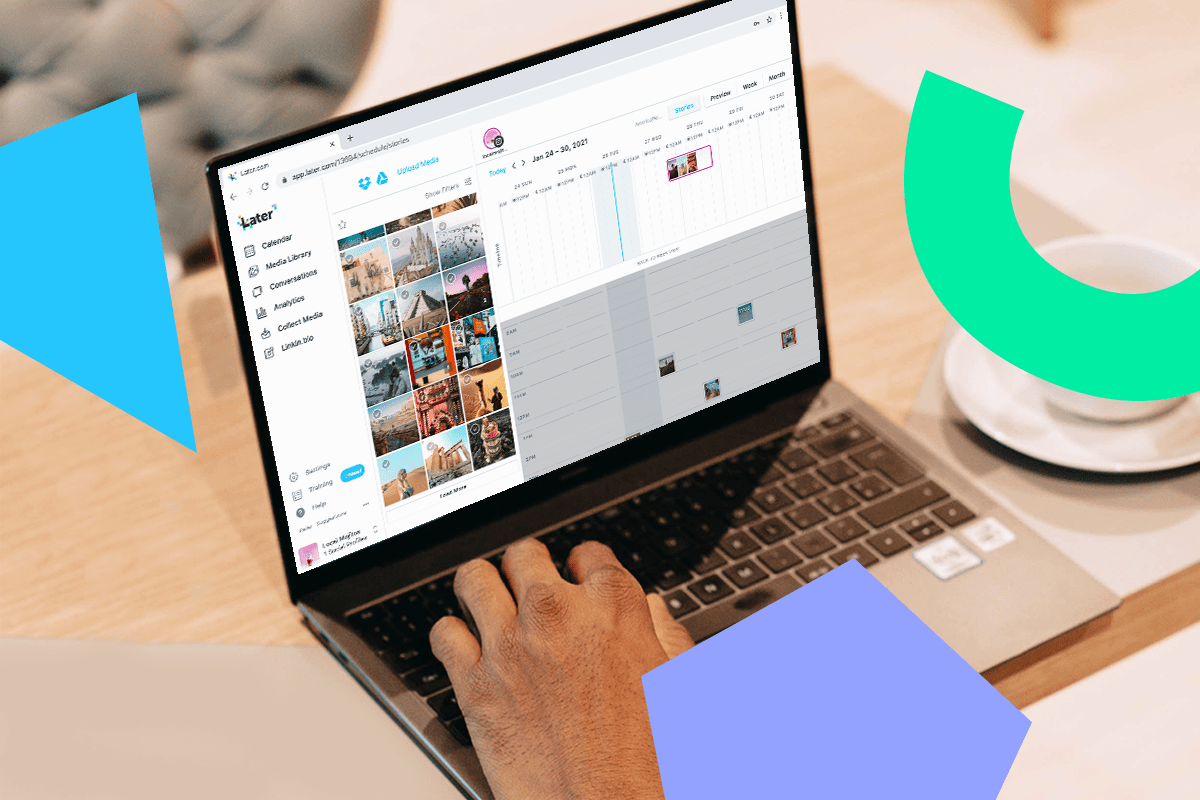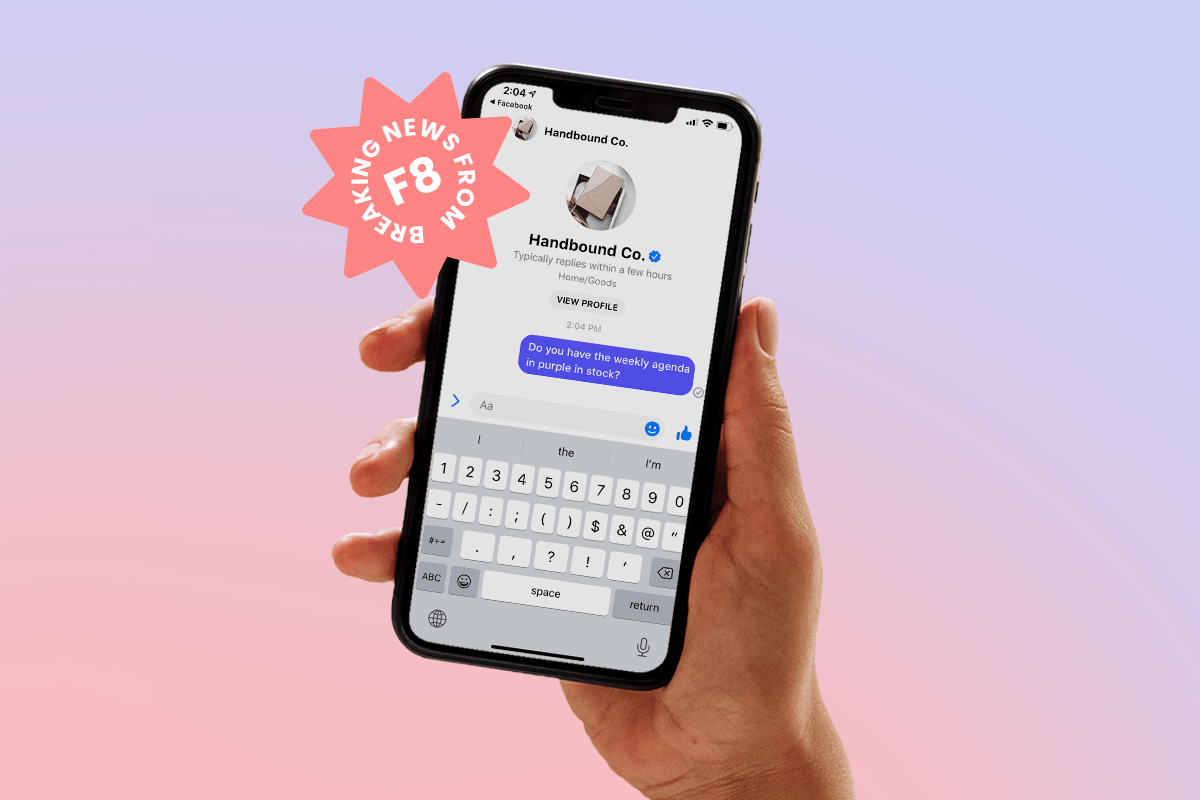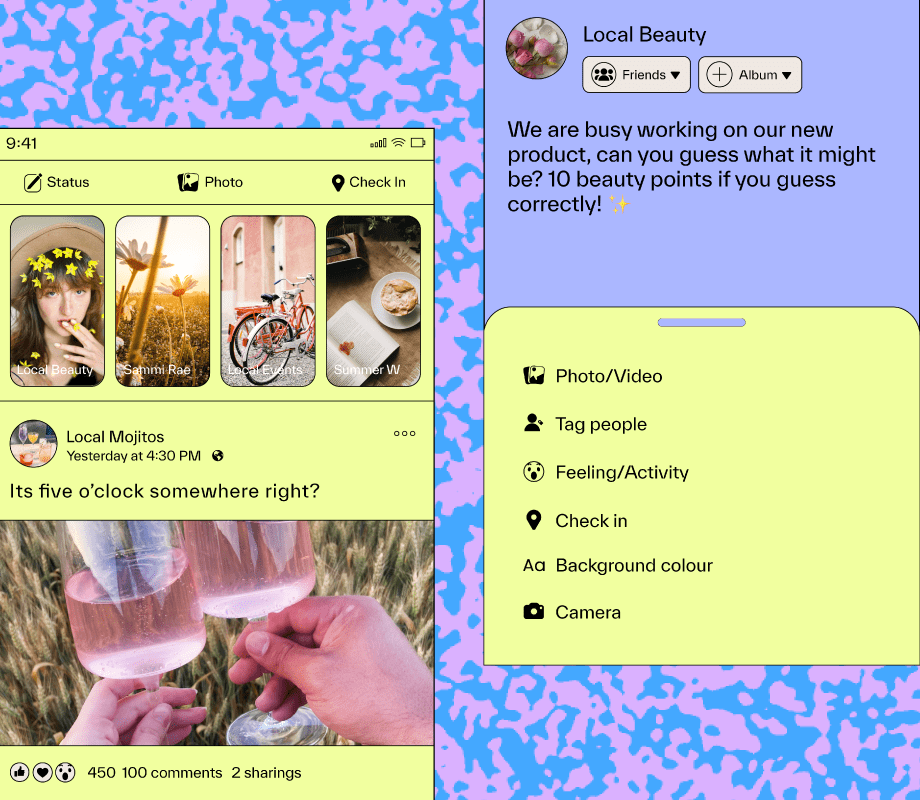For a small business, having a social media strategy is essential for increasing brand awareness, reaching your target audience, and driving sales.
With a strong social media strategy, you’ll never run out of ideas on what to post — and you’ll soon have an engaged community at your fingertips.
What is a Social Media Strategy for Small Business?
A social media strategy encapsulates everything you want to do and achieve on social media. It details what you’ll post, the platforms you’ll use, and defines measurable goals that will support your specific business needs.
Smart social media strategies for small businesses can increase brand awareness, build your audience, and increase revenue.
However, this growth won’t happen overnight. It requires a consistent and strategic approach.
Take a look at chai cafe Kolkata Chai Co. — they regularly post across multiple platforms and have built a thriving community as a result.
Their social media typically features 3 types of content: recipes, product photography, and videos.
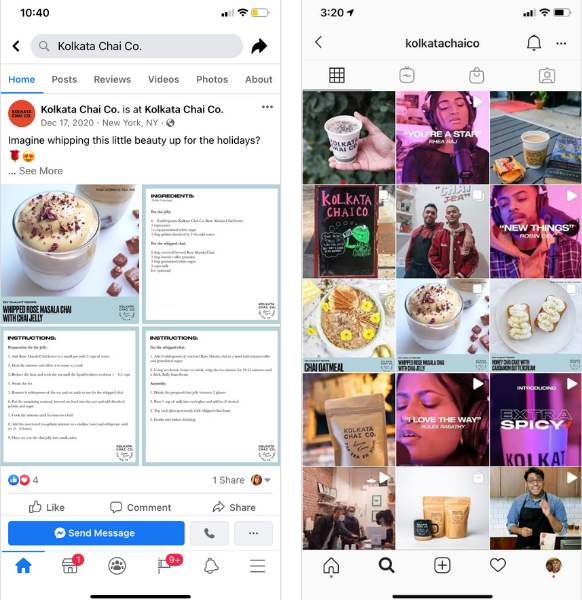
Their recipe posts are informative and inspirational, while their product images are directly promotional. Their video content showcases artists from the Indian community — providing insight into Kolkata Chai Co.’s brand values.
All of this content works together to build brand awareness and drive sales, creating a cohesive social media strategy across platforms.
Ready to create your social media strategy for 2022? Social Media expert Steph Gilbert shares her top tips in this step-by-step video:
How to Create a Social Media Strategy for Small Businesses:
Part #1: Define Your Social Media Strategy — and Set Your Goals
Creating a social media strategy from scratch may seem intimidating, but setting SMART goals keeps the process realistic and achievable.
A SMART goal is:
Specific
Measurable
Achievable
Relevant
Timely
Apply this method to your social media marketing plan by basing the goals on metrics that are specific to your business.
For example, you might want to track how many people follow your social media account month over month.
If this is your first time creating a social media strategy, it’s a good idea to start with a handful of important goals — so you can really hone in on them.
This way, you’ll be able to track progress over time and use them as a baseline to build upon in the future.
Want to learn how to set goals (and actually achieve them?) Watch Later’s free goal setting workshop which will help you make those social goals a reality!
Part #2: Identify the Right Social Media Platforms for Your Business
Every social media platform has a unique set of pros and cons — which means you can be selective with your approach.
Starting off with platforms that make the most sense for your business will help you save time and avoid becoming overwhelmed by your content calendar.
Not sure which platform is best for your business? Here’s a basic rundown:
As a visual platform, Instagram is the perfect platform for showcasing your products or services in action. It’s also a great place to grow a community who loves your brand.
Plus, Instagram now has a ton of e-commerce features — making it easier than ever to convert your followers into customers.

Instagram is also known for its huge community of social media influencers. Partnering with creators or influencers to create sponsored posts can be a great way to reach relevant audiences and potential new customers.
In addition to sponsored posts, Instagram can also be an awesome platform for finding organic user-generated content (UGC) about your products or services.
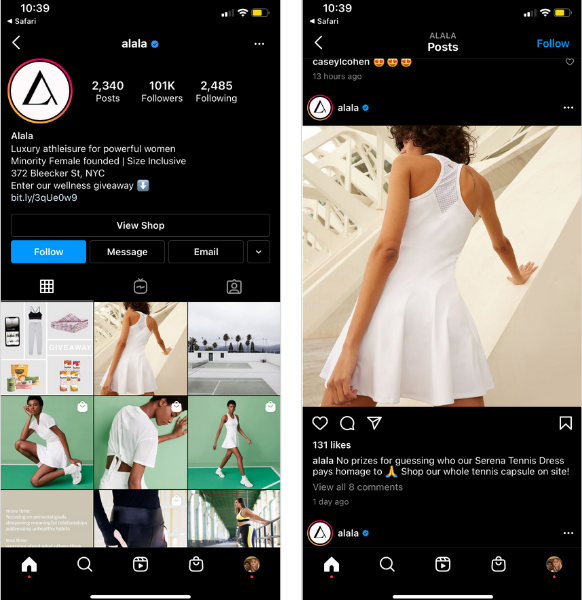
Sharing UGC is a great way to show your products in action, and can act as a valuable third-party recommendation for your brand.
Improve your content workflow with Later’s user-generated content tools — source, schedule and repost UGC to your feed in minutes!
Facebook, the most widely-used social media site, is an all-purpose platform where you can share photos, company updates and information, videos, and other informative content to build brand awareness and trust.
Much like Instagram, Facebook is jam-packed with e-commerce features — and has some of the most sophisticated targeted advertizing tools in the business.

Facebook also sets itself apart with its advanced suite of community forum features — such as Facebook Groups, Messenger Rooms, and Live Events.
Plus, Facebook’s powerful analytic tools are great for helping you learn more about your followers and keeping you on track with your SMART goals.
Looking to level-up your Facebook strategy? Plan, schedule, and post to Facebook with Later — for free!
Twitter is a platform for short messages and shareable media, making it ideal for company announcements, articles or blog posts, and customer support.
Twitter is great for connecting quickly in real time, which also makes it the top choice for companies with plenty of news updates and resources to share.
For example, beverage brand innocent drinks frequently uses Twitter to communicate with their customers and answer questions:

TikTok
If you think TikTok is just for teenagers, think again.
TikTok is a video-driven platform full of informative, entertaining, and creative content — and businesses are using the platform to show how their products work, share behind-the-scenes, give tips, and join trending challenges.
Here, Lucume uses the platform to promote a collection of their clay earrings:
TikTok’s younger audience is great for businesses marketing to Gen Z, but the TikTok demographic is shifting — with more millennials joining the mix than ever before.
Plan and schedule your TikTok videos in advance — right from your desktop or phone! Upgrade to one of Later’s paid plans to get started.
YouTube
Unlike most social platforms, YouTube allows you to share longer form videos, with a huge maximum upload file size of 128GB (or 12 hours!).
This makes it the perfect platform for more in-depth, educational content — such as styling tips, interviews, tutorials, and transformations.
For example, Later uses YouTube to share social media tips, strategies, how-to videos, courses, and conference sessions:
YouTube typically requires more time and energy than other platforms, but it can yield huge results. YouTube is primarily a search engine, which means users who search for and discover your content are more likely to have a strong interest in the topic and a genuine intent to engage.
Ready to get started? Find out everything you need to know about creating a YouTube channel here.
As a visual discovery platform, Pinterest is perfect for reaching new, relevant audiences. Plus, the whole experience is fully clickable, making it easy to turn browsers into customers.
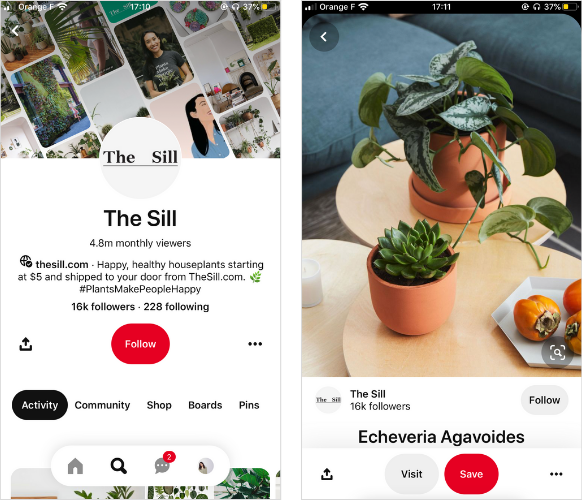
On Pinterest, users “pin” photos that link to resources, product pages, and content across the web. Pins are typically visually appealing, and the links generally direct to blog posts or product pages.
Pinterest is a great platform for driving traffic to your site, and brands can create “boards” full of curated pins — making it easy for your audience to find related pins all at once.
As a Pinterest Partner, Later offers exclusive features to help you grow your business on Pinterest. Start planning and scheduling your Pins with Later now!
LinkedIn is a great platform for building your network, raising brand awareness, and attracting new talent to join your business.
Similar to Twitter, many brands use LinkedIn to share company updates, news releases, media coverage, articles, or blog posts.
Plus, with more than 722 million users worldwide and a ton of new engagement-driving features, it’s a platform to consider creating a strategy for.
Now that you know what each platform offers, choose the ones most relevant to your business. Don’t be afraid to start with only 1 or 2 — it’s better to focus your energy where it will be most effective.
DID YOU KNOW: You can now plan and schedule your content for Instagram, Facebook, Twitter, Pinterest, and TikTok with Later — all from one easy-to-use dashboard!
Part #3: Define Your Brand Voice
Your brand voice is like your company’s personality — it’s how you speak to your audience. And it might slightly differ from platform to platform.
Take The Washington Post for example. On TikTok they use comedy to create funny and informative videos. On Twitter, they share the highlights of an article without any fluff:
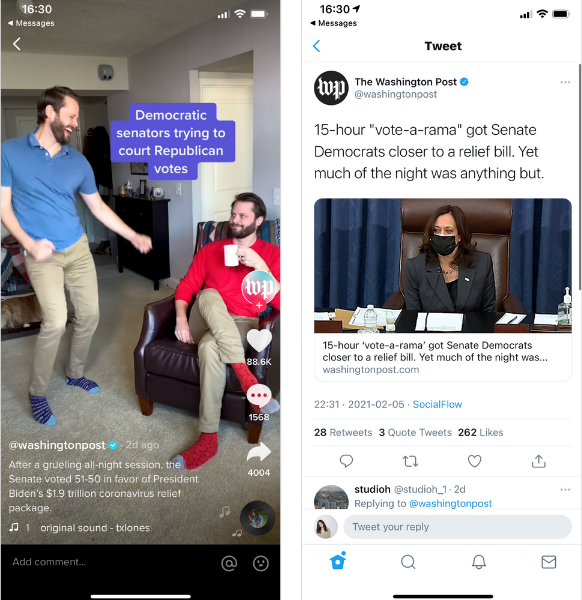
If you’re struggling to pinpoint your tone, consider your brand’s values and mission. Are you formal and serious, or more relatable and friendly?
One brand doing this well is Pur Home, a line of natural cleaning products with an eco-friendly mission.
They channel their values into their brand’s tone with a friendly voice and sustainability-focused content:
TIP: Consider how would you talk about your business, products, or services to a friend as you refine your brand’s tone of voice!
Part #4: Create and Manage Your Social Media Posts
After you define your goals, choose the platforms you’ll use, and develop your brand voice, it’s time to start creating and posting content.
As a busy small business owner, a helpful way to avoid becoming overwhelmed when creating content is to practice content batching.
It’s a helpful productivity technique where you create multiple captions, photos, and videos during a set period of time.
And when you want to schedule content, using Later’s social media scheduling tool will help you save time and always share content at your best time to post.
With Later, you can upload photos in batches, find amazing UGC, schedule content weeks in advance, and more.
And with features like Best Time to Post and a free AI caption writer — your content calendar will be strategic, consistent, and cohesive.
#5: Track and Measure Your Social Media Goals
Now that you’ve nailed your content strategy, well done! You’ve done the hardest part.
But don’t forget, the key to a successful social media strategy for small business is consistency.
Monitoring your analytics to see how many people you’re reaching and how they’re interacting with your posts is vital to your strategy as they show you what’s working — and what isn’t.
Luckily, Later Analytics makes it easy to track insights you can use to inform your content strategy — whether it’s increasing engagement or growing your audience.
There you have it — a quick how-to guide for creating a social media strategy for small business.
Take the time to develop SMART goals, define your brand voice, and choose platforms that align with what you’re trying to achieve.
And if you create consistent content and analyze your metrics, you’ll be one step closer to creating a successful long-term strategy.
Ready to simplify your social media strategy for small business? With Later, you can plan, schedule, and monitor your posts all in one place!
